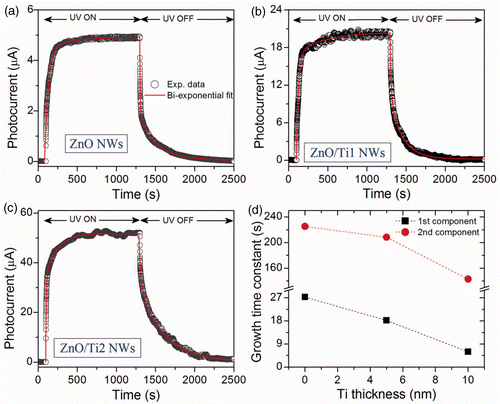Figures & data
Figure 1. FESEM images of the chemically grown ZnO NWs on Si substrate: (a) top view, (b) 45° tilted view, (c) TEM image of the ZnO/Ti NW heterostructure, where the Ti was deposited for 75 s, (d) a magnified side view of the above heterostructure. Both the images clearly show the decoration of the Ti NPs (marked by solid arrow) on the surface of the ZnO NWs.
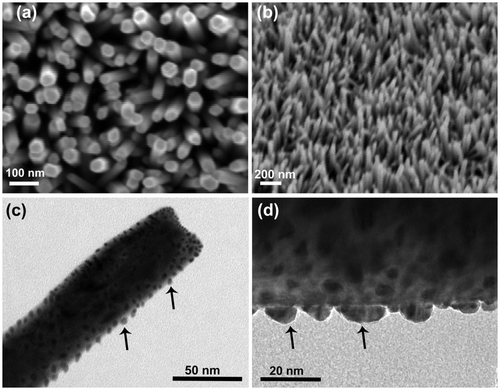
Figure 2. XRD patterns of the chemically grown NWs: (a) as-grown ZnO NWs and (b) ZnO/Ti2 NWs heterostructure, respectively.
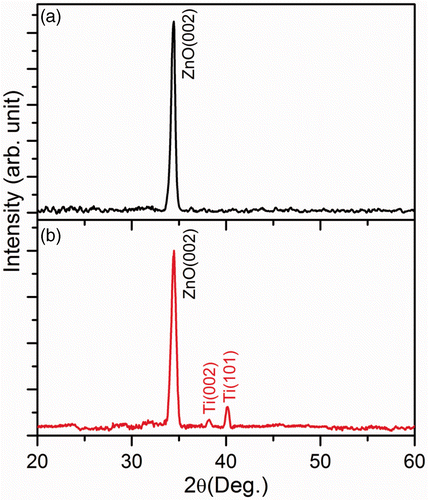
Figure 3. Room temperature PL spectra of the: (a) as-grown ZnO NWs, (b) ZnO/Ti1 NWs heterostructure and (c) ZnO/Ti2 NWs heterostructure, respectively. A significant improvement in the intensity of the UV PL is obtained after the deposition of Ti NPs on the ZnO NWs. Three peaks are fitted with Gaussian line shape functions (solid line) to the experimental data (open circle). (d) Variations of enhancement factors of UV, blue and green emissions with different thickness of Ti.
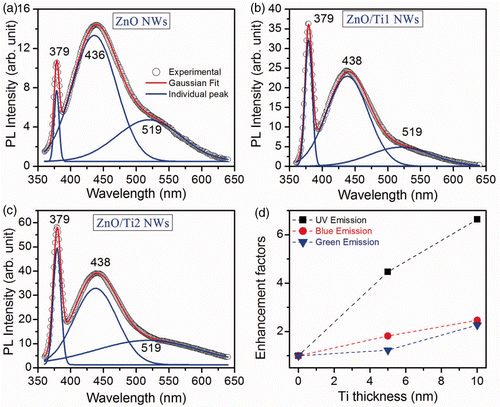
Figure 4. Dark current–voltage characteristics of the as-grown ZnO NWs and ZnO/Ti2 NWs heterostructure. Inset shows the energy band alignment of the above heterostructure. The solid arrow mark shows the easy transfer of electrons from the Fermi level of Ti to the conduction band of ZnO NWs, resulting in larger dark current.
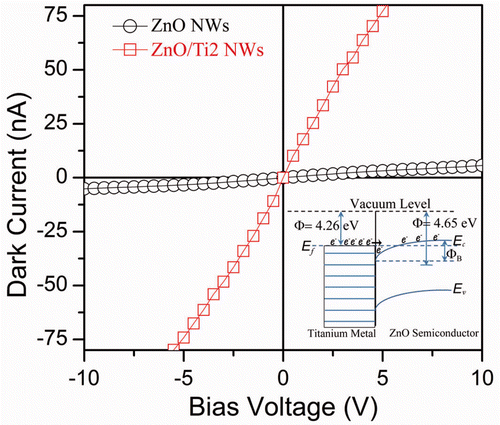
Figure 5. Photoresponse behaviors (measured at 365 nm) of the: (a) as-grown ZnO NWs, (b) ZnO/Ti1 NWs heterostructure and (c) ZnO/Ti2 NWs heterostructure, respectively, measured at a bias voltage of 3 V. The photocurrent is measured under UV light in ‘ON’ and OFF conditions. Individual growth and decay time constants are calculated from the modified bi-exponential fitting (solid line) to the experimental data points (open circle). (d) Change in time constants (1st and 2nd components of PC growth) with the thickness of Ti metal layer.
